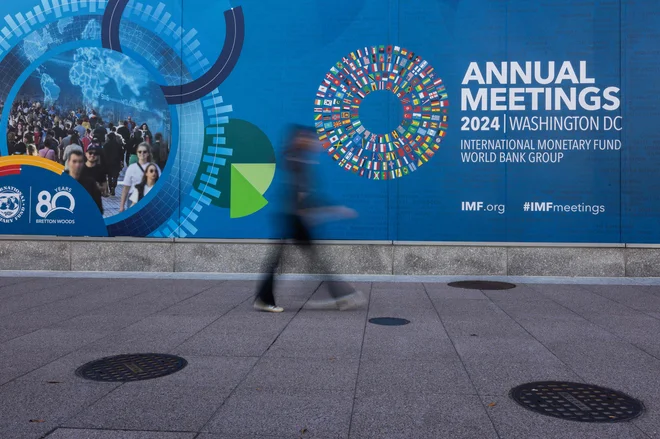
- Torek, 15. julij 2025
- Delo home
-
Neomejen dostop | že od 14,99€
IMF lowers growth forecasts for Slovenia and the euro area

The International Monetary Fund (IMF) has released new projections for the global economy at the start of its autumn meeting in Washington, maintaining a forecast of 3.2% economic growth for this year and next. The projections for the euro area remain much less favorable, where analysts estimate that growth hit rock bottom last year, reaching only a modest 0.4%. This year and next, thanks to slightly higher exports and domestic demand, it is expected to slightly rise to 0.8% and 1.2%, respectively, both of which are lower than the IMF's last July forecast.
The IMF estimates that the growth of real wages in the euro area will stimulate consumption, and the gradual lowering of interest rates will eventually support investments. Regarding Slovenia, they have lowered the growth forecast for this year from 2% to 1.5% (which is the same as Umar's forecast), and for next year, they predict a renewed strengthening of GDP growth to 2.6%. They also forecast a significant reduction in the average annual inflation rate, from last year's 7.4% to this year's 2%, with the average price growth expected to rise again to 2.7% next year.
The IMF anticipates further reductions in interest rates. In the euro area, they predict another rate cut in December this year, followed by two more 0.25 percentage point reductions in the first half of next year.
Good news is only the reduction of inflation
In times of numerous and increased global risks and challenges, the good news is mainly that the global battle with inflation is almost won, notes IMF's chief economist Pierre-Olivier Gourinchas. The average price growth worldwide is decreasing from 9.4% in 2022 to a projected 3.5% in 2025, which is also lower than the average inflation in the first two decades of this century. At the same time, in the context of escalating conflicts and increased geopolitical and climate risks, thoughtful action is now essential in three key areas: monetary, fiscal policy, and structural reforms.
Regarding future challenges, the IMF adds that inflation risks, despite the good news about price reductions globally, are now increasing. The escalation of regional conflicts, especially in the Middle East, could be a serious risk for trade. Without mentioning the USA and the possible re-election of a protectionist-oriented president, the IMF also warns that "shifts towards undesirable trade and industrial policies could result in significantly lower output compared to our baseline forecast." They also cite monetary policy as a risk for lower growth, which could remain too restrictive for too long, and do not rule out the possibility that global financial conditions could suddenly tighten.
Projections for global economic growth over the next five years remain bleak, at 3.1%, the lowest in several decades. While this mostly reflects poorer forecasts for China, medium-term forecasts have also deteriorated in other regions, including Latin America and the European Union, notes the IMF's chief economist.

Komentarji